Droogmakerij de Beemster (Beemster Polder): The Beemster Polder is an exceptional example of reclaimed land in the Netherlands. The Beemster Polder was created in the period 1607-1612 by draining a lake, 47 windmills were used to drain the Beemster Polder. The newly gained land was divided into a geometrical pattern of squares by roads and ditches, so that the polder looks like a gigantic chess board. The Beemster lies about 3.5 meters below sea level, a landscape of fields, roads, canals, dikes and small villages. The Beemster is considered to be the oldest polder of the Netherlands, but the Dutch had already polders in the 15th century. Windmills played a vital role to keep the Dutch polders dry. Now, modern pumping stations keep the polders dry. Among the protected monuments in the Beemster Polder are churches, residential and farm buildings, industrial buildings, bridges and mills. The village of Middenbeemster is located in the centre of the polder. The Keyser Church at Middenbeemster (1623) is the oldest building in the Beemster Polder. It was built by the Dutch architect Hendrick de Keyser, who also designed the Westerkerk in Amsterdam. The Church of Middenbeemster has remained almost original. The Beemster is also known for the 'stolpboerderijen', characteristic cheese-cover farmhouses. Five fortresses of the Defence Line of Amsterdam are located in the Beemster Polder: Fort aan de Middenweg, Fort Benoorden Purmerend, Fort Jisperweg, Fort Nekkerweg en Fort Spijkerboor. Droogmakerij de Beemster (Beemster Polder) was declared a UNESCO World Heritage in 1999. World Heritage Art: Chess Board
www.werelderfgoedfotos.nl © Copyright World Heritage Photos Classic Car Road Trip
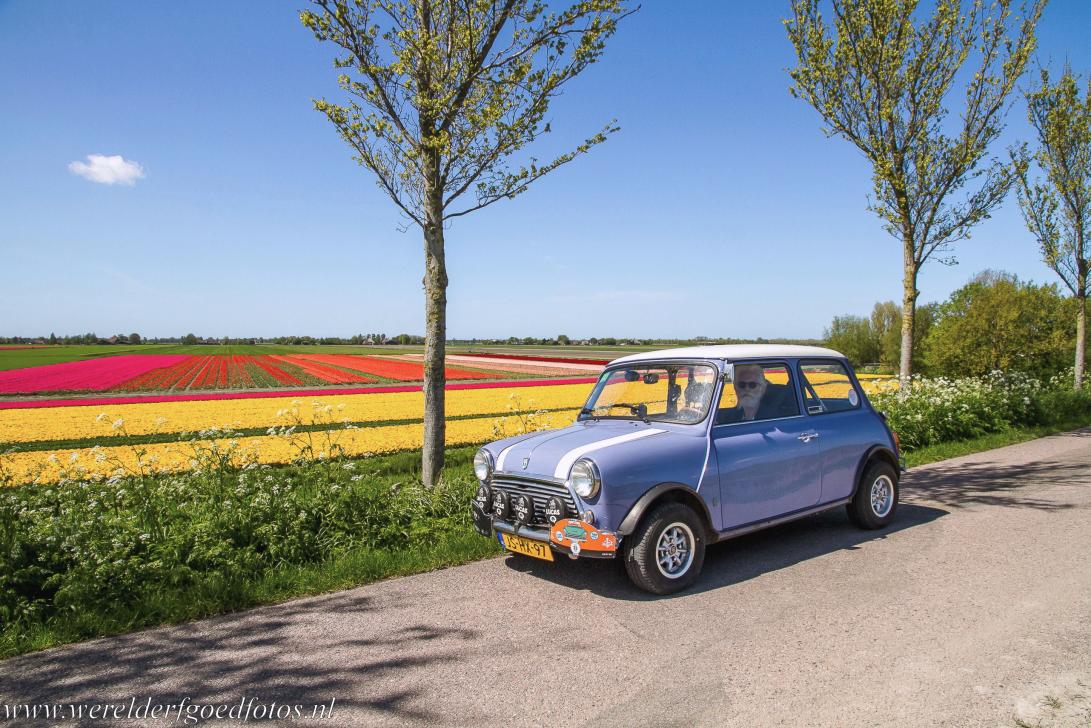
Spring in the Beemster Polder. A classic Mini in front of one of the flowering tulip fields of the Beemster Polder. For those who wish to visit the flowering tulip fields and blooming fruit trees in the Beemster, from mid-April until the beginning of May is the best period. The daffodil and hyacinth fields bloom already in early april. Droogmakerij de Beemster (Beemster Polder) was inscribed on the UNESCO World Heritage List in 1999.

Spring in the Beemster Polder. A classic Mini in front of one of the flowering tulip fields of the Beemster Polder. For those who wish to visit the flowering tulip fields and blooming fruit trees in the Beemster, from mid-April until the beginning of May is the best period. The daffodil and hyacinth fields bloom already in early april. Droogmakerij de Beemster (Beemster Polder) was inscribed on the UNESCO World Heritage List in 1999.
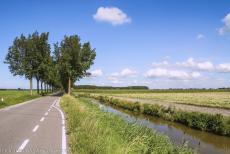
In 1607, it was decided to drain the Beemster, at that time a large lake. The Dutch mill builder, hydraulic engineer and architect Jan Adriaanszoon Leeghwater was involved in the reclamation of the Beemster Polder. Leeghwater had the supervision on the land reclamation process, he used 47 windmills to drain the Beemster Polder. Adriaanszoon Leeghwater was also involved in the creation of several other Dutch polders and also polders in France, Germany and England.
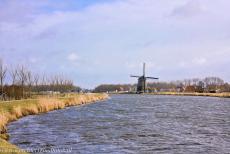
The Necker windmill on banks of the Beemsterringvaart (Beemster Ring Canal). The Beemster Polder was created in the period 1607-1612, new land 3.5 metres below sea level. Once there were thousands of windmills to drain the Dutch polders. In the late 19th century, the windmills were replaced by steam pumping stations. Nowadays, the polders are drained by modern diesel and electric driven pumping stations.
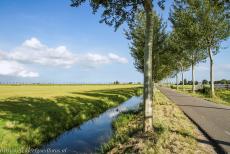
The Beemster Polder is known for its straight ditches and roads lined with trees. Already in the 15th century, the Dutch started to create more farmland. Lakes and marshes were enclosed by dikes and windmills were used to pump the polders dry, the water was pumped into drainage canals and a network of canals carried the water towards the sea. The Beemster Polder gained the status as a UNESCO World Heritage in 1999.
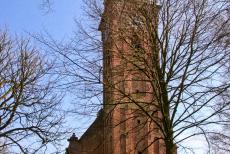
The Keyser Church at Middenbeemster is the oldest building in the Beemster Polder. The church was completed in 1623. The Keyser Church has remained almost original. The church was built by the famous Dutch architect Hendrick de Keyser, he also built the West Church in Amsterdam. Five churches were planned in the Beemster Polder, but the Keyser Church at Middenbeemster is the only one that actually has been built.
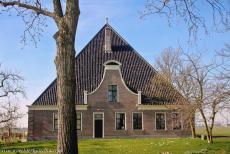
The Beemster Polder is also famous for the characteristic 'stolpboerderijen', traditional Dutch farmhouses in the shape of a cheese-cover or bell-jar. The cheese-cover farmhouses were built in the mid-17th century. The farmhouses were surrounded by a ditch and only accessible via a small bridge. The 'stolpboerderijen' were divided into living quarters for people and livestock, they housed also storage rooms for crops, grains, food and hay for the animals.
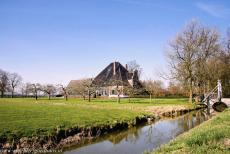
Beemster Polder: The characteristic cheese-cover farmhouse 'De Eenhoorn', the Unicorn. 'De Eenhoorn' is a traditional cheese-cover farmhouse from the early period, dating from 1682. It is the oldest and one of the most imposing of the 350 'stolpboerderijen', bell-jar or cheese-cover farmhouses, of the Beemster Polder. The farmhouse is surrounded by a ditch and accessible by a small bridge. 'De Eenhoorn' is a private residence.

Beemster Polder: The vicarage where the Dutch author Betje Wolff (1738-1804) lived. She lived here with her husband Adriaan Wolff, a clergyman. In the 18th century, she was one of the most well-known residents of the Beemster Polder. In her writings she rebelled against the traditional female role, and that already in the 18th century! Nowadays, the vicarage is a museum, it is situated in Middenbeemster, a village in the Beemster Polder.
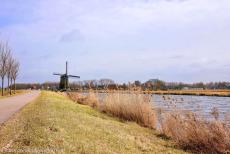
Beemster Ring Dike and Beemster Ring Canal surrounds the Beemster Polder. The Beemster Ring Canal is part of the Noord-Hollands Kanaal (Canal). Water is pumped out of the Beemster Polder into the Beemster Ring Canal, and via a network of canals the water is transported to the sea. The windmills played a vital role to keep the polders dry, nowadays, the modern pumping stations keep the Dutch polders dry in wet seasons.
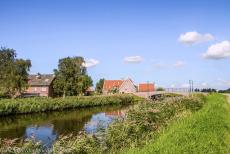
The Beemster is one of the oldest polders in the Netherlands. The Beemster Polder is divided into a geometric pattern of squares by roads and ditches, so that the polder looks like a gigantic chess board. The Beemster Polder lies below sea level, and also below the water level in the ring canal and the land on the outside the ring dike, the dike around the polder. About one third of the Netherlands is situated below sea level.

Fort Spijkerboor hidden away in the southwestern part of the Beemster Polder, the fortress was built to protect the Beemster Ring Canal, Noordhollands Kanaal (Canal) and the ring canal of the Starnmeer Polder gainst enemy attacks. Fort Spijkerboor is the largest fortress of the Defence Line of Amsterdam, it was constructed in 1889-1911. Fort Spijkerboor is not only a monument, but also is a nature reserve.
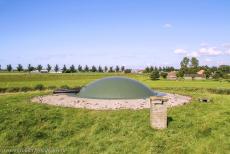
The turret of Fort Spijkerboor, the fortress is situated in the Beemsterpolder. Fort Spijkerboor is the northernmost fort of the Defence Line of Amsterdam. Five fortresses of the Defence Line of Amsterdam are situated in the Beemster Polder, Fort Spijkerboor, Fort along Middenweg, Fort Nekkerweg, Fort Benoorden Purmerend and Fort Jisperweg. The Defence Line of Amsterdam is also a UNESCO World Heritage.
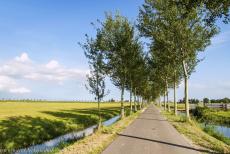
The Beemster Polder is known for its straight ditches and roads lined with trees. Already in the 8th century, the Dutch started to build dikes to protect their farmland from flooding. However, a polder is new land, reclaimed land from a lake, a marsh or the seabed and protected by dikes. The Beemster Polder is considered to be the oldest polder, but the Dutch had already polders in the 15th century. The Beemster Polder is a UNESCO World Heritage.
